Trail Blazers' Surprise Second-Half Success Shouldn't Short-Circuit Their Long-Term Plan
If they want to take the next step in the rebuild, the Blazers must learn from the mistakes of 2016.

The Rose Garden Report is a fully independent, reader-supported publication. Purchasing a premium subscription unlocks exclusive content and helps sustain the website and make the coverage of the Portland Trail Blazers the best it can be.
📍PORTLAND, Ore. — The last time the Trail Blazers were supposed to be this bad, and wound up being this good, was nine years ago.
Following Neil Olshey's draft-night trade of Nicolas Batum to Charlotte for Noah Vonleh in 2015, three-fifths of their starting lineup (LaMarcus Aldridge, Wesley Matthews and Robin Lopez) left in free agency. They retooled around a 25-year-old Damian Lillard with cheap value free-agent signings and trades for role players like Al-Farouq Aminu, Moe Harkless and Ed Davis. Their preseason over/under win total was 26.5. The plan after losing Aldridge was clearly to reset, lose a lot and use the draft lottery to put more talent around their ascendant superstar.
Lillard had other ideas.
That team outperformed their win projection by 17 games, going 43-39. Lillard made second team All-NBA, C.J. McCollum won Most Improved Player, Terry Stotts finished second in Coach of the Year voting and the Blazers got the fifth seed in the Western Conference.
Even more shocking than making the playoffs, the Blazers actually won a series. They beat the Clippers in the first round, thanks mainly to Chris Paul and Blake Griffin getting hurt. Then, they lost in a very competitive and close five-game series to the 73-win Warriors while Stephen Curry worked his way back from a knee injury he suffered in the first round against the Rockets.
The 2015-16 Blazers being that much better than anyone thought was one of the best stories in the NBA that year. They didn't get the lottery pick they went into the season wanting, but they learned that Lillard was too good to tank.
The unexpected playoff run wasn't the problem—the front office's reaction was.
They bought fully into that overachievement being the real deal. Olshey said at the time that their internal projections had them as a 54-win team when Aminu played power forward. They believed they were on the verge of contention, and spent accordingly.
That was the infamous cap-spike summer, when the Warriors were able to add Kevin Durant without gutting their rotation. The entire league lost their minds in free agency, and the Blazers were one of the worst offenders. $70 million for Evan Turner. Matching Brooklyn's $75 million offer sheet for Allen Crabbe. $40 million each to re-sign Harkless and Meyers Leonard. $15 million for Festus Ezeli, who never played a game for the Blazers and never played another game in the NBA.
Joe Cronin was not the Blazers' top decision-maker at the time (he was primarily a scout and cap guy under Olshey), but he saw firsthand how shortsighted thinking led what should have been a promising young team to completely back themselves into a corner and give themselves a hard ceiling.
If it weren't for that summer—if they'd taken a step back, realized they got a little bit lucky in the playoffs and stuck to their long-term plan—maybe they would have been able to build a true title contender around Lillard. Maybe they could have avoided the cycle of mediocrity that eventually led the franchise's all-time leading scorer to request a trade.

Fast-forward to Sunday afternoon.
Cronin and head coach Chauncey Billups, having both signed brand-new contract extensions after a 15-win improvement over last year, held a joint press conference at the Moda Center before the Blazers' regular-season finale against the Lakers. It was the cap to a second-half surge that saw them go 23-18 over their final 41 games.
Those 41 games got Billups, and maybe to a lesser extent his boss, more job security and more runway to keep building. They're very convinced that second half of the season is more indicative of what the Blazers are than the first half, when they went 13-28 with the NBA's fourth-worst offense and third-worst defense.
Convinced enough to go all-in on that stretch.
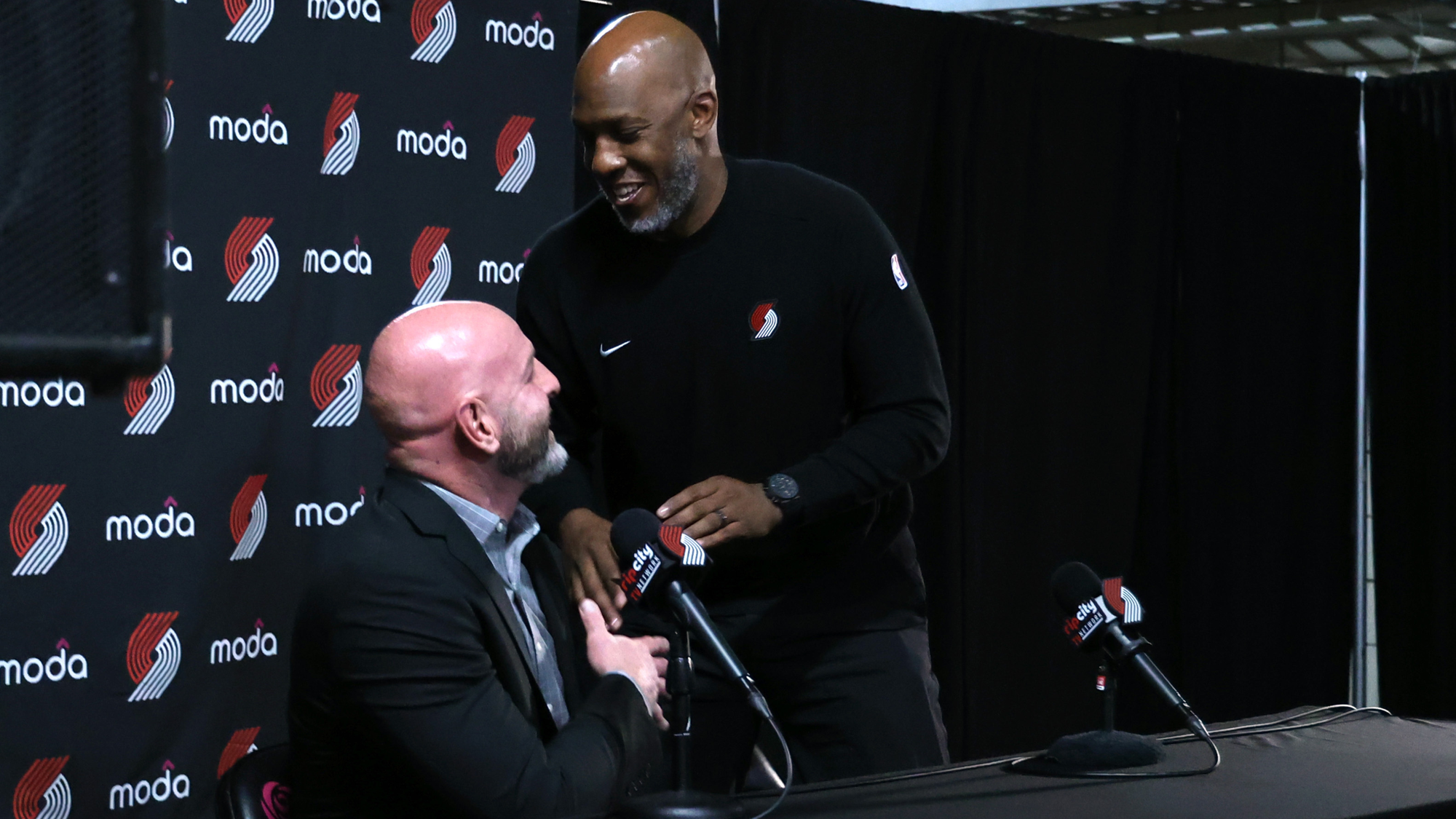
"When they started playing the level of defense that we expected, when we started being more connected, we started winning ballgames on a nightly basis, that changed everything for us," Cronin said. "We're really proud of what happened in the second half of the season. The defensive improvement. For us to be the third-best defensive team in the league the second half of the season, that's meaningful. That's what we've been trying to build. That's what we're pointing to moving forward. This is who we are."
One thing was clear from Sunday: in the Blazers' minds, they aren't rebuilding anymore.
Cronin couched it slightly by saying they wanted to see how the draft and free agency go, but he said on Sunday that making the playoffs next season is "definitely a goal of ours," and that being in the postseason is a "reasonable expectation."
They have no choice now but to think in those terms. At 36-46, the Blazers fell short of making the play-in, but they showed beyond a doubt that, on a night-to-night basis, they're a lot better than the Washington-Charlotte-Utah cluster of teams that are firmly committed to landing in the top of the draft. Tanking isn't realistic for them anymore, even if they wanted to do it again. Deni Avdija and Toumani Camara have improved too much to let that happen, and Scoot Henderson and Shaedon Sharpe showed the kind of development the organization went into the season hoping to see.
So their only option, really, is to try to get better through trades and free-agent signings while hoping the internal development they saw this year continues at the same rate.
What they need to avoid is going recklessly all-in on what looks to be a very promising group. Chicago had a similarly promising young core developing and then decided to speed it up by trading several future picks (one of which became Franz Wagner) for Nikola Vucevic, a good starter but not a needle-mover, and boxed themselves into being a perpetual ninth seed.
Cronin knows as well as anyone the dangers of falling into that trap. He lived it as part of Olshey's front office in 2015-16. Skipping steps back then set the franchise back almost a decade.
"That's our challenge, to build this the right way," Cronin said. "That's what we've been committed to—to not take shortcuts, to make sure this is sustainable, from a roster construction and cap standpoint but also from a realistic player-development standpoint. Getting these guys the opportunity to be their best, which we have. So it's a challenge to not get sped up. Balancing that with a level of aggression that we hope to have as we try to keep getting better and better."
Last summer's trade for Avdija seems to be Cronin's sweet spot for these additions. A rebuilding team giving up two first-round picks to add talent raised eyebrows at the time, but the process behind the move was easy to see. In Avdija, they saw a player they felt was undervalued and capable of more than he had shown through four seasons in Washington, who fit the tough defensive culture Billups wanted to build, and moved aggressively to get him. Their instincts proved correct—Avdija was the Blazers' best player for most of the season and is going to be a franchise pillar going forward.
Now, they have to find more Deni Avdijas.
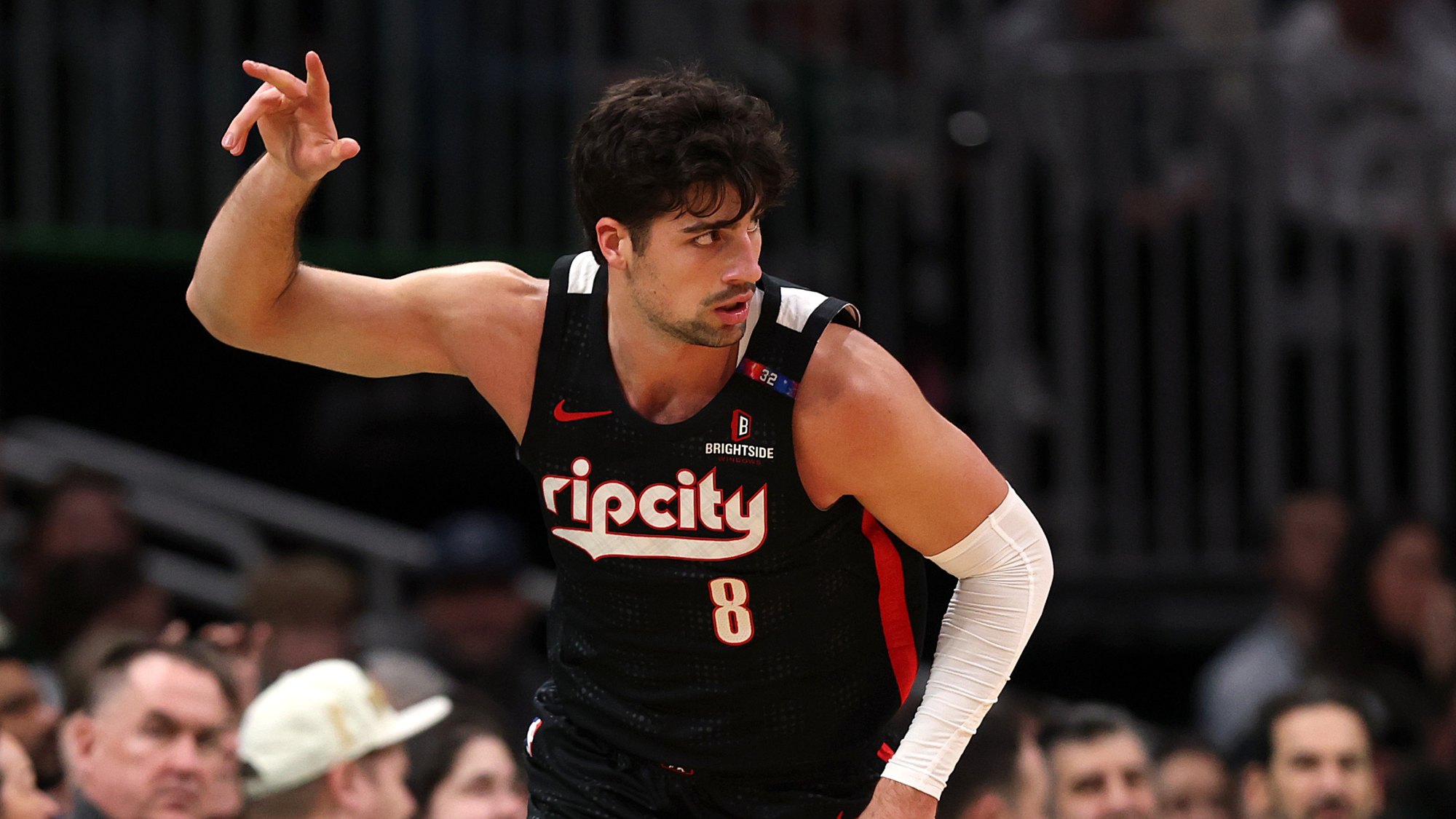
"I think we can be more diligent about the kind of player we look to add," Cronin said. "I love that we're at the stage where, as a front office, we don't feel the need to keep taking swing after swing. We're starting to feel more comfortable with our talent base that we can be more diligent about adding specific types of guys."
There was one comment from Sunday's press conference that made me raise an eyebrow. Asked about the Blazers still lacking a clear-cut number-one scoring option, Billups listed off Nikola Jokic, Shai Gilgeous-Alexander and Giannis Antetokounmpo—quite literally, the three best players in the NBA—as examples of players who developed into superstars and all-time greats when no one expected it.
"Most people would say, yeah, go get such-and-such," Billups said. "We might have that person. We might already have those guys."
I get where Billups is coming from and why he thinks that way. The defining team of his playing career, the 2004 Pistons, was built without a traditional superstar. He's talked often since he took this job four years ago about wanting to put his stamp on the team's identity. It's not surprising that he talks about developing that top-level star from within and wanting to replicate one of NBA history's great outlier championship teams, which he happened to be a part of. Suggesting that Avdija or Camara could grow into MVP-caliber talents is more than a little ambitious. But that's what they have to sell right now.
A lot still hinges on what happens on May 12 at the draft lottery. After finishing tied with Phoenix for the ninth-worst record, the Blazers will have a 3.7 percent chance of landing the No. 1 overall pick and about a 17 percent chance of jumping up into the top four. Those odds aren't zero, and getting lucky enough to bring in Cooper Flagg, Dylan Harper or V.J. Edgecombe would make it a lot easier to convince people that they're as far along as they think they are.
Whether or not the ping-pong balls bounce in their favor will probably decide how aggressive they are the rest of the offseason. But to Cronin and Billups, the proof of concept is already there.
"We believed in ourselves a lot, but you also wanted to see results," Cronin said. "Once we started to see legitimate sustained results—yes, small sample size, half a season, but I think there's a lot of good things to point to that's happened with this roster over the last couple years since we started this rebuild."
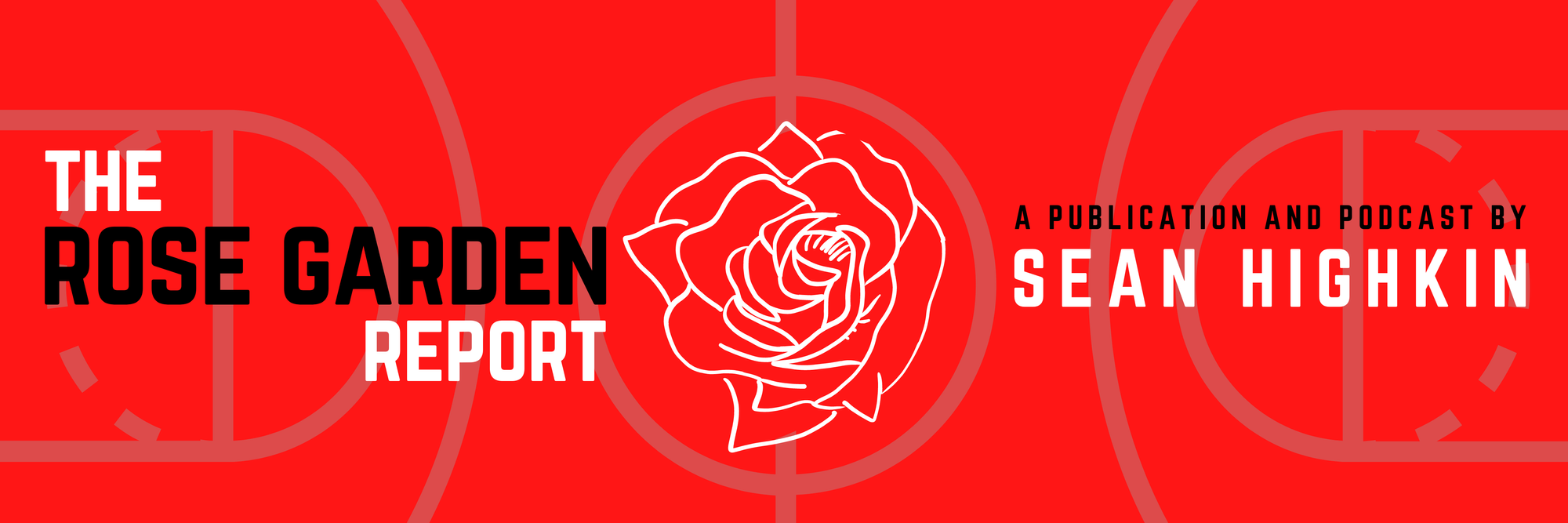
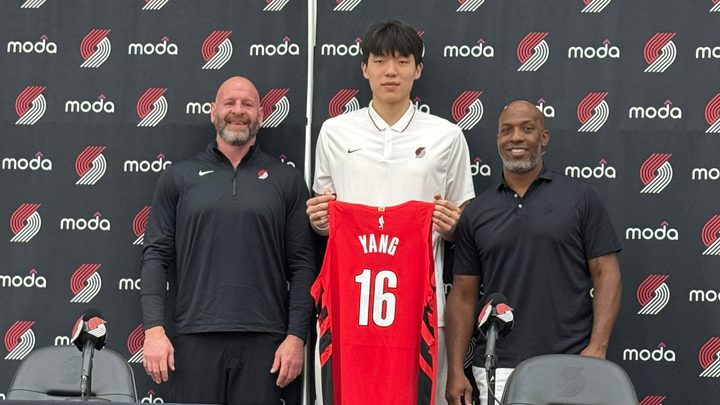
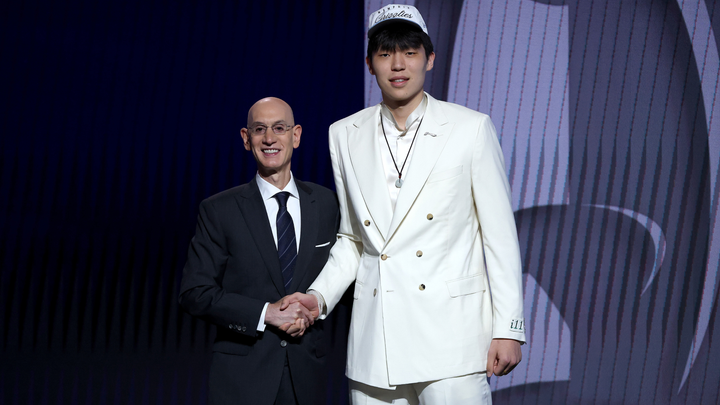
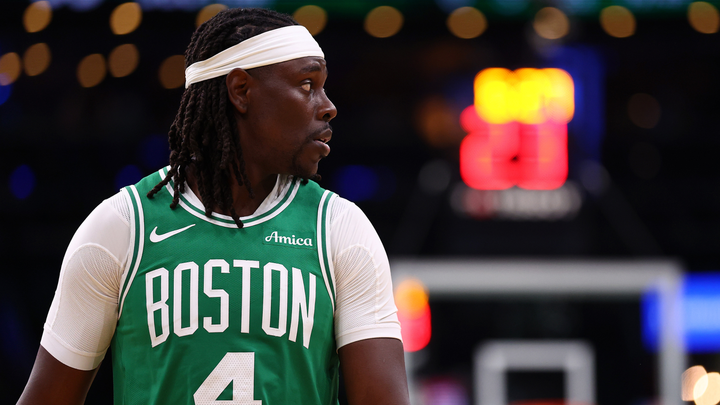
Comments ()